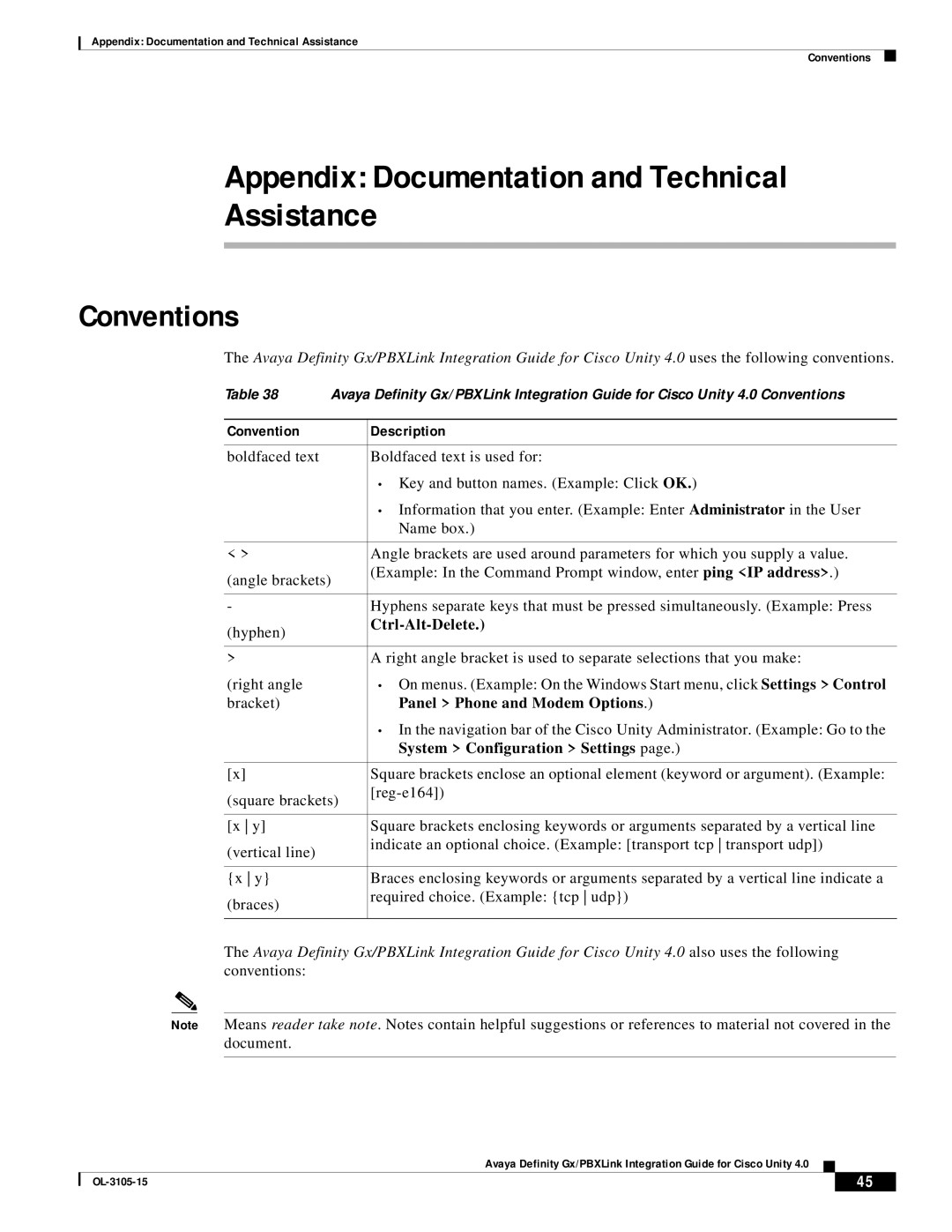
Appendix: Documentation and Technical Assistance
Conventions
Appendix: Documentation and Technical
Assistance
Conventions
The Avaya Definity Gx/PBXLink Integration Guide for Cisco Unity 4.0 uses the following conventions.
Table 38 | Avaya Definity Gx/PBXLink Integration Guide for Cisco Unity 4.0 Conventions | |
|
|
|
Convention |
| Description |
|
|
|
boldfaced text |
| Boldfaced text is used for: |
|
| • Key and button names. (Example: Click OK.) |
|
| • Information that you enter. (Example: Enter Administrator in the User |
|
| Name box.) |
|
|
|
< > |
| Angle brackets are used around parameters for which you supply a value. |
(angle brackets) | (Example: In the Command Prompt window, enter ping <IP address>.) | |
| ||
|
|
|
- |
| Hyphens separate keys that must be pressed simultaneously. (Example: Press |
(hyphen) |
|
|
|
| |
|
|
|
> |
| A right angle bracket is used to separate selections that you make: |
(right angle |
| • On menus. (Example: On the Windows Start menu, click Settings > Control |
bracket) |
| Panel > Phone and Modem Options.) |
|
| • In the navigation bar of the Cisco Unity Administrator. (Example: Go to the |
|
| System > Configuration > Settings page.) |
|
|
|
[x] |
| Square brackets enclose an optional element (keyword or argument). (Example: |
(square brackets) | ||
| ||
|
|
|
[x y] |
| Square brackets enclosing keywords or arguments separated by a vertical line |
(vertical line) |
| indicate an optional choice. (Example: [transport tcp transport udp]) |
|
| |
|
|
|
{x y} |
| Braces enclosing keywords or arguments separated by a vertical line indicate a |
(braces) |
| required choice. (Example: {tcp udp}) |
|
| |
|
|
|
The Avaya Definity Gx/PBXLink Integration Guide for Cisco Unity 4.0 also uses the following conventions:
Note Means reader take note. Notes contain helpful suggestions or references to material not covered in the document.
Avaya Definity Gx/PBXLink Integration Guide for Cisco Unity 4.0
| 45 |
| |
|
|
